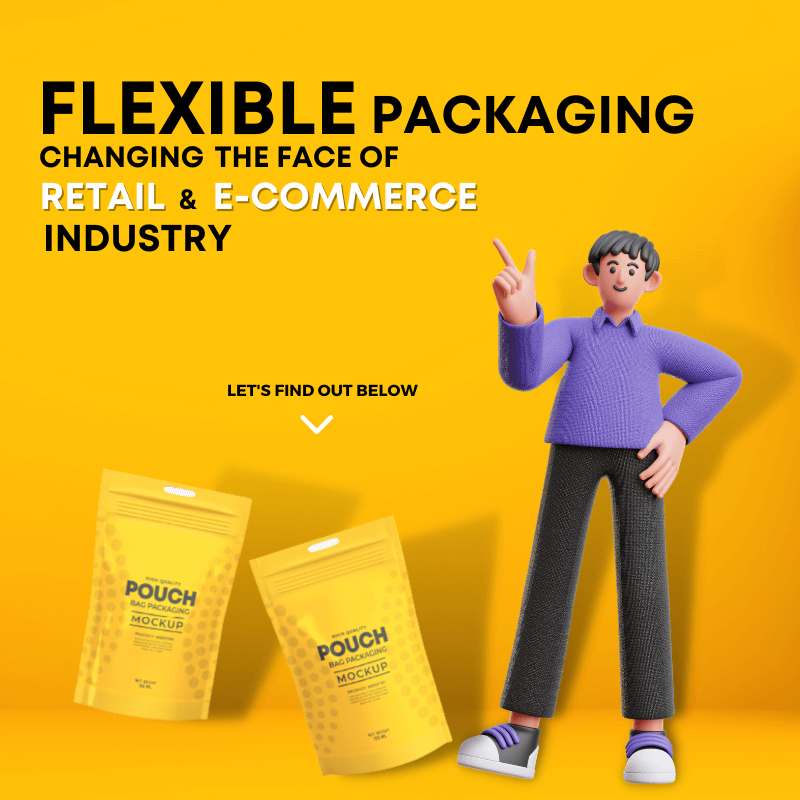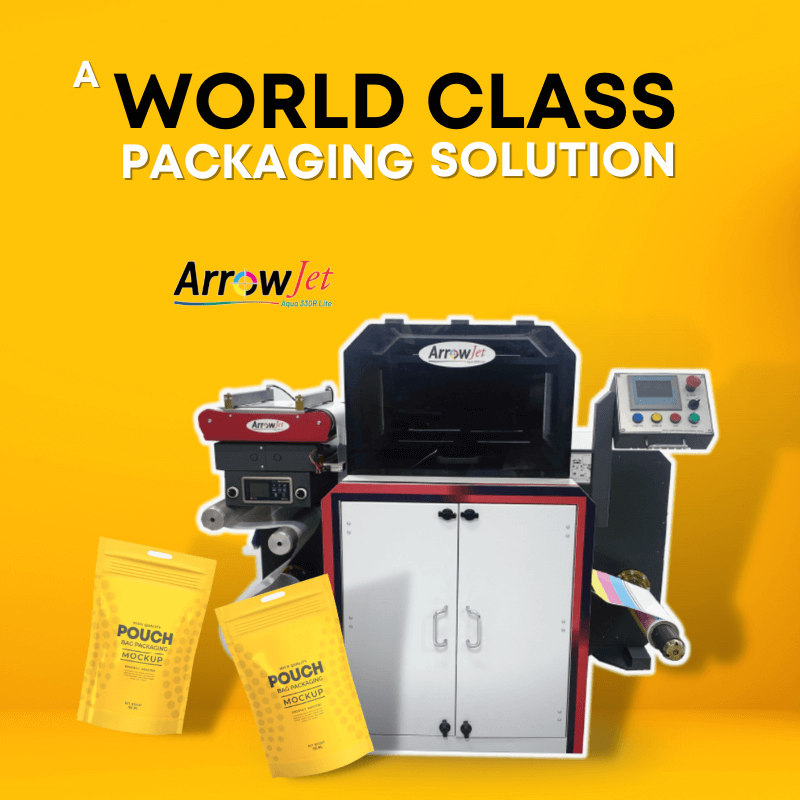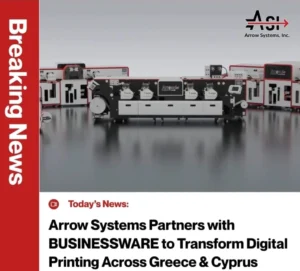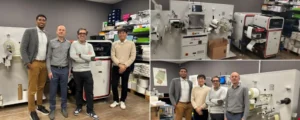Flexible Packaging and its types
In the last couple of years, flexible packaging and flexible films have been boosted and it has been contributing to the development of the flexible packaging industry across the globe. Since it is more agile in terms of the packaging solution flexible packaging and films have caught the minds of the customers.

Table of Contents
There are a number of flexible packaging films that can be used in other ways to develop innovative packaging for various product requirements, from pharmaceutical, medical, food, and drinks to oils and more. While designing a package for your specific products there are a number of characters and variables that can be considered to preserve and showcase products. This variety of materials can be used relying on their high clarity, strength, durability, usability, portability, and more.
Below mentioned are the most common flexible packaging film types that are being used across the globe.
Low-Density polyethylene films LDPE
It is generally known as LDPE films, the most popular item of the industry’s standards for its high flexibility, durability, and tensile strength. These films are very easy to fabricate through leveraging high-pressure processes.
Linear low-density polyethylene LLDPE
LLDPE is the most agile plastic sheet film and has been among the top names on the lists of popular packaging film types. With its high potential to absorb effect or puncture-resistant features, it has become a transforming form of LDPE.
Bi-axially Oriented Polyethylene BOPE
BOPE is one of the ideal solutions for packaging products that need high-standard stiffness. Its best features include brilliant heat sink strength, moisture resistance function resistance, durability, high transparency gloss, and more. Producing these films costs low.
Biaxially oriented Polyamide BOPA
BOPA is also very popular for its brilliant durability, high tensile strength, puncture-resistant features, and aroma barrier. But one of its highest benefits is its transparency. Because of its transparency, BOPA is a better barrier for oxygen and for some specific chemical substances.
By actually oriented polypropylene polymer BOPP
BOPP films offer the best class durability as well as resistance to measure along with some extra advantage of clarity. All these features make it a wise choice for retail packaging purposes. The film is basically completed with a foil coating layer which helps enhance the performance sharply.
Bi-axially oriented polyethylene terephthalate BOPET
BOPET films were first launched into the market during the mid-1950s. BOPET films are generated from Polyethylene terephthalate. This film is very popular for reflectivity, great tensile strength transparency, dimensional stability, chemical stability, electrical insulation, gas barrier properties, and much more.
Laminates
Laminated film for food packaging is the most common application which serves for all flavored beverages, preserve foods, and foodstuffs like sauces and powders. Laminated films embrace a multi-layer structure having one of the polymer films or paper giving support to metalized and aluminum films

Let's discuss How is Flexible Packaging Made?
- The plate-making process is the procedure of manufacturing printing plates that shifts ink to the printing material while it is getting printed. In this process, the color of the genuine image is recreated through the dots developed on the printing plate.
- During the printing process, ink printing machinery and printing plates are realized to achieve better graphic reproduction as per the requirement. Now the graphics as well as texts available on the printing plate will be shifted to the substrate.
- The third step is the quality inspection process. In this process the printed partially finished products are inspected and rejected by the quality checking machine. This helps reduce the production loss in the total process while also making the difficulty of quality inspection low.
- The fourth step is the comparing process which combines two or more materials in order to form an integrated material. The biggest advantage of composite materials is to maintain the best features of single-air materials while also coming with the concerned drawbacks. After composition, these materials hold fresh characteristics that meet various requirements of food as well as other business requirements for composite materials.
- The fifth one is the curing process in which the primary agent and the curing agent present in the composite film finishes the reaction. The freshly created compounded composite product is enabled to enter the next process since the adhesive layer is not completely set and cured. However, the development is then divided into heating maturation and room temperature maturation.
In this case, normal temperature means the composite film finishes the reaction between the curing agent and the main agent only at room temperature. Heating curing is the process in which composite film completes the reaction between the curing and the main agent at a very specific temperature. Curing and heating processes can gear up the reaction between the curing and main agent while shortening the production cycle. The final process is about bag making in which the composite film is heat-sealed in a bag shape as per the user’s requirements. The inside layer of the composite film should have heat-sealing properties.
The sixth process is the slitting process in which the laminated composite film or the printed film is slit. During the production process, the sitting material is completely discharged via the unwinding device. And the photoelectric control system manages the longitudinal travel position of the material in order to keep the cutting knife position of the sitting product unwavering. On the other hand, the winding device finds the cut product in a very sharp roll film.
Top 4 Reasons to choose flexible packaging
- Customizable and lightweight- flexible packaging products are very much lighter when compared to their alternatives like wood, glass, and metal. These packaging products are portable and there are very few chances of them getting damaged during the shipping process. This helps companies to ship more packaging products with high-profit margins.
- Online consumption- Since the E-Commerce sector is the fastest growing industry and consumers are looking for door-to-door services. Customers are looking for convenience not just in the case of functionality but also in the case of delivery. In this case, flexible packaging turns out to be a savior and the best option for retailers since the last quantities of products can be easily and safely shipped over long distances.
- Ease of use- It is one of the biggest advantages of flexible packaging products since they are very easy to carry and open. This turns out to be a big plus point for consumers and retailers as well. Flexible packaging aids businesses to offer their consumers products that can be purchased in small amounts.
- Enhanced branding- Flexible packaging has brought an array of interesting events for companies to develop innovative packaging for products that can appeal to a number of customers while keeping them retained. With this, brands can easily discover and keep experimenting with their new packaging methods so that they can stay abreast of the competition. Printing product packages with world-class designs and appealing taglines can travel a long way when it comes to improving brand awareness.

Down the Line
With different types of flexible packaging films available on the market, you should choose one that would fit your needs. You might need a high melting point or durability, or recycling, you can choose the best-suited packaging film for your requirements. However, it is always suggested to do good research and know your needs to check the best options.
If you have been looking for the best class flexible packaging then ArrowJet Aqua 330R Lite would be the best choice. It is a world-class high-resolution, digital pigment inkjet label printer that offers incredible production print speeds of 69ft/min and can be field upgradable to 150ft/min.
Contact With Our Team Now
Trending Post
Recent Blog Post

Breaking News: Arrow Systems Partners with BUSINESSWARE to Transform Digital Printing Across Greece & Cyprus

Sid Sistemas de Impresión in Spain Installs ArrowJet Aqua 330R and DPR Taurus to Bolster Label Production

